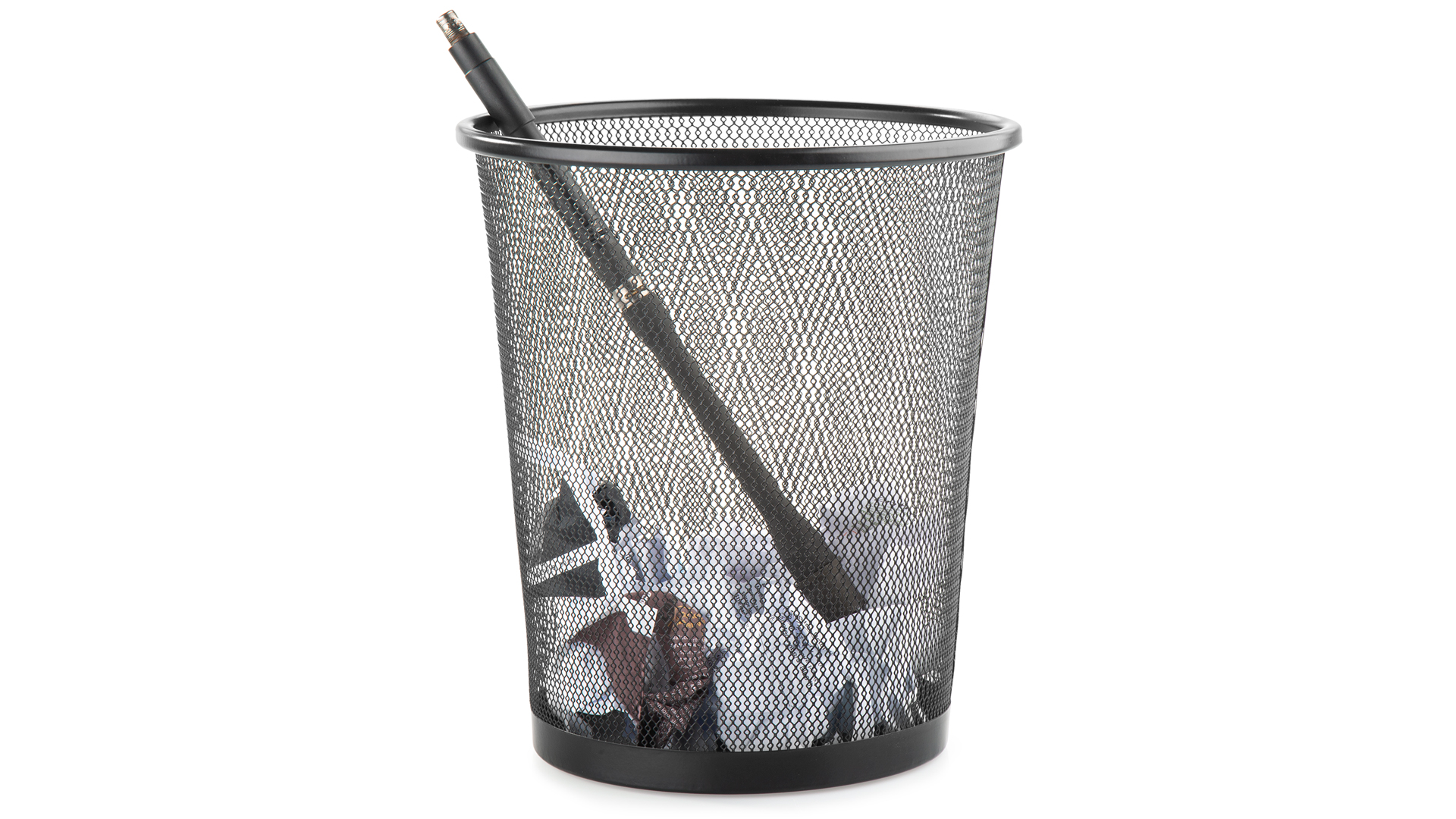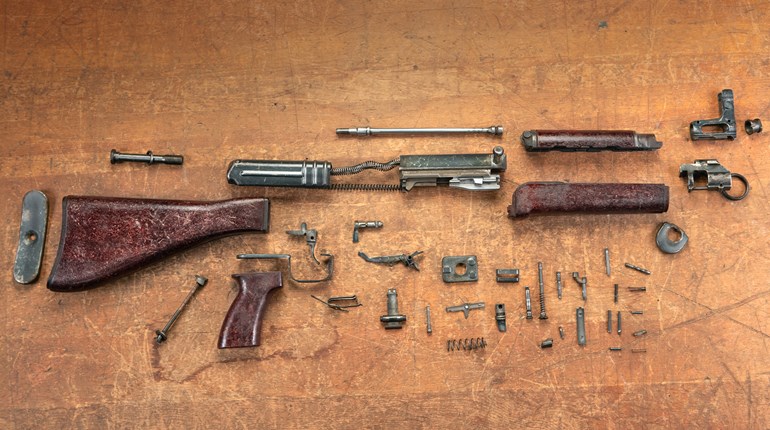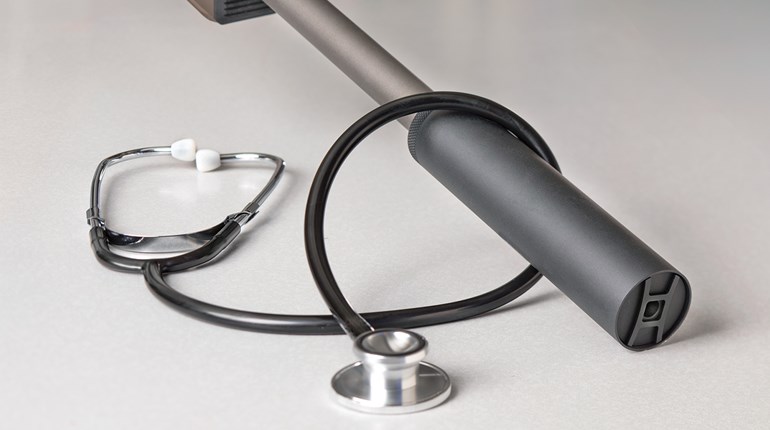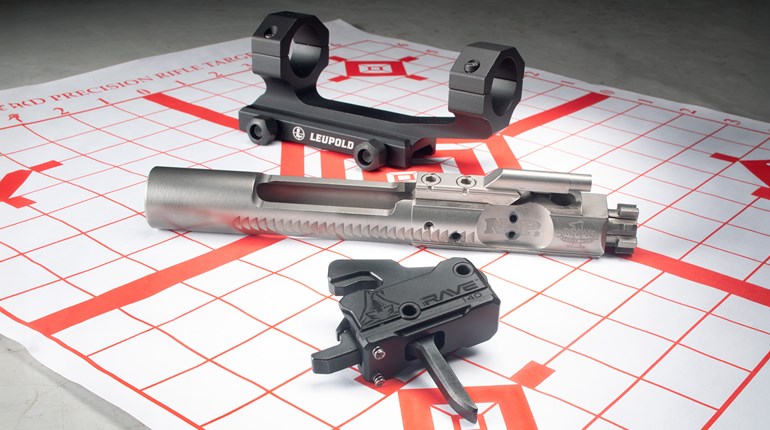
Saying “goodbye” can be difficult. Whether you are walking away from the smoking wreck of your first car, seeing an old friend off for the last time or coming down from a zombie-movie-binge-fest-induced high, splitting a formerly happy union carries some degree of unpleasantness. Yet, when the parting of ways is between you and a worn-out rifle barrel that has heretofore delivered accurate results, frustration often surpasses the normal separation blues. Nobody wants to go through the process of buying a new barrel, having it installed and then breaking-in and “doping” their rifle all over again. But, that is exactly what we have to do when a barrel gives up the ghost.
I “shot out” my first barrel in the mid-1990s. Seemingly overnight, this key ingredient of my issued, semi-automatic sniper rifle had morphed from a steady 1-MOA shooter into a magnet of ridicule on the range. When the precision-rifle specialist in my unit’s arms room announced that my rifle needed a new barrel, I collapsed to the floor and wept openly. Not really. I did utter some unkind words about the barrel’s maker, my bad luck and metallurgy in general, though.
How did the armorer know it was time for me to divorce my old barrel? He used a series of troubleshooting steps that I now employ whenever non-performing rifles come across my own bench. However, prior to diving into a barrel’s inner mysteries, a series of potential contributors to inaccuracy should be ruled out. These preliminary, user-level troubleshooting steps may help you avoid the whole barrel-replacement issue in the event your targets suddenly start looking like shotgun-pattern boards.
First, check your sighting system for proper mounting and function, including any rings or bases. Try a different optic and mount if you suspect you have a sight problem. Also, double check that you are using the same ammunition lot. Different lots of identical factory loads are likely to shift zero, but accuracy levels should at least be similar. Test other proven loads, too, just to be sure. If the barrel is supposed to be freefloated, ensure that there is no contact between the handguard and accessory-mounting hardware with the barrel or gas block. Likewise, check for debris or unintentional contact inside a conventional stock’s barrel channel.
Next, verify that anything which should be tight, still is. Examples include gas-block screws, barrel nut, muzzle device, action/guard screws and fore-end screws. For rifles with a gas tube and carrier key, slide the stripped bolt carrier into the receiver to check whether or not the gas tube is dragging inside the key. Visually inspect your barrel’s crown for nicks, gouges, burrs, irregular wear or excessive carbon caking and look through the [cleaned] bore for obvious burrs or other damage.
If your rifle passes these checks, it is time to dive deep into the barrel itself. Enlisting the services of a good gunsmith can be helpful at this point. If a starting throat measurement was taken when the barrel was new, have it gauged again to see how far this critical portion of the bore has eroded. A change of .05 to .1 inch over several thousand rounds is not out of the ordinary for a non-magnum semi-automatic, depending on caliber, how the rifle was used, the barrel material and any surface treatments applied to the bore. Once the throat advances several tenths of an inch, accuracy typically deteriorates. Simply gauging a barrel’s throat will not tell you if it needs to be replaced, but it does add to the overall wear-and-tear picture.
Bore scoping the barrel often reveals other problems. First, it shows the condition of the bore’s inner surface and rifling. Significant copper buildup is fixable with some effort. Partially worn-through chrome lining and/or heat checking are indicators of excessive barrel wear. Worn chrome does not always correspond to accuracy degradation, but it does indicate a rate of wear that will continue to accelerate. My experience is that heat checking, which has the appearance of a dried mud flat, is a harbinger of bad shooting to come. Finally, bore scoping allows a close inspection of chamber walls, locking-lug raceways, muzzle crowns and gas ports, where present. In the latter case, this bullet’s eye view can confirm or deny whether that dangly thing you saw with the naked eye is a jagged port edge, an accuracy-robbing bore gnome or just some cleaning-patch fuzz.
If the sum of these inspection efforts, combined with your recent accuracy problems, points to a worn-out barrel, it is time to go shopping. You can at least look forward to better matching the replacement to your needs. For example, if the rifle’s maker chose a barrel profile that balanced like a lead pipe, now is your chance to trim things down a bit. Or, if the old workhorse limited your bullet weights due to a restrictive twist rate, you can remedy that with the new tube.
Other considerations include barrel length, muzzle threads, steel types and surface treatments, such as Nitriding for both durability and corrosion resistance. The past few decades have seen a fair amount of debate about which common rifling type—cut, button or cold-hammer forged—is best for long-term durability. Each method has pros and cons worth considering, but that is a whole conversation unto itself. As you weigh all these choices, remember that the old barrel was a reliable shooter, so perhaps you should simply get a replacement that is as close to the original as possible.
While waiting for your new barrel to be installed, take time to consider your cleaning and shooting habits. If chamber and bore care were not your strong suits in the past, it is time to up your maintenance game. Likewise, if you were blessed with enough ammunition to regularly super-heat your barrel, perhaps you should throttle back on the mag dumps.
While barrel replacement is painful, the light at the end of the tunnel comes as you once again see good performance downrange. In the case of that first barrel I burned up, the old 1-MOA, chrome-moly tube that came from the rifle’s manufacturer was replaced by a .75-MOA, stainless steel model from Shilen. In those pre-nitride finish days, I was happy to get better corrosion resistance, along with a more accurate-shooting self-loader, when all was said and done. Provided that you choose wisely and the barrel is replaced correctly, you stand a good chance of realizing the same or better performance as was provided by your old friend.




































